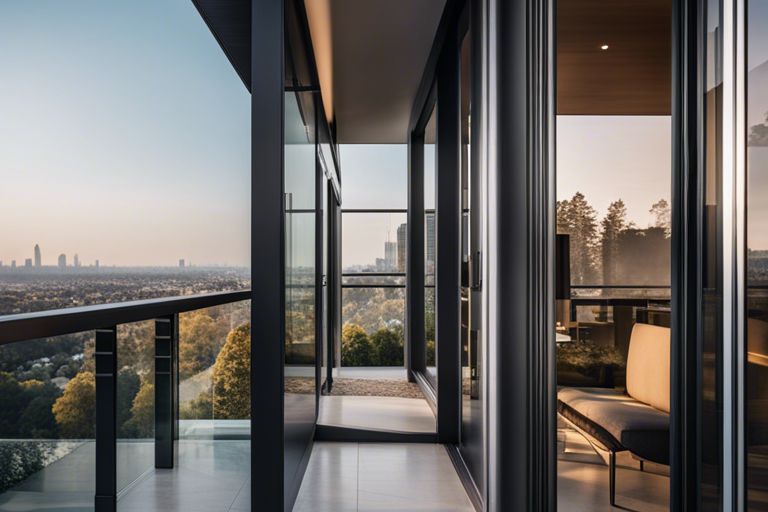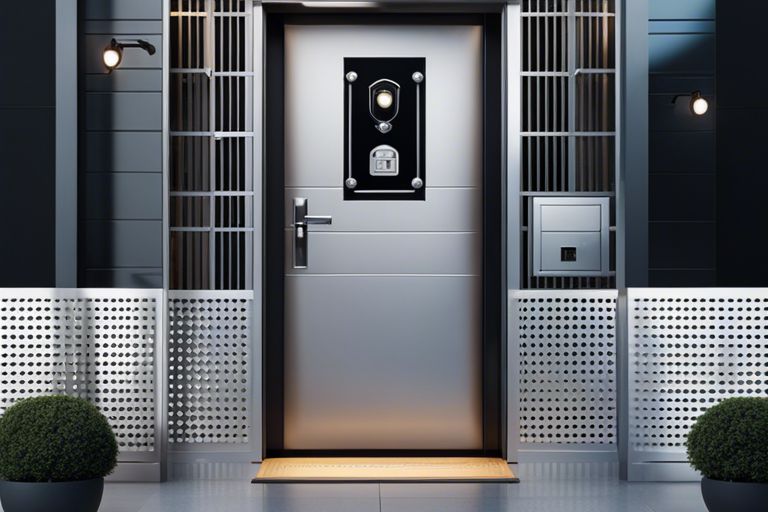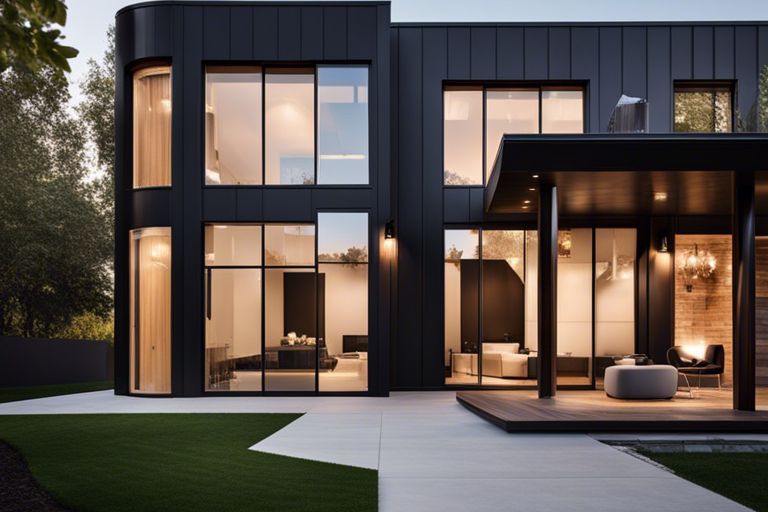Flat rooflights have a significant impact on the quality of daylight entering a room, which in turn can greatly influence the mood and well-being of individuals. The installation of flat rooflights allows for a larger amount of natural light to flood into a space, creating a brighter and more airy environment. This not only reduces the reliance on artificial lighting but also boosts productivity, energy levels, and overall mood in occupants. Additionally, exposure to natural light has been linked to improved sleep patterns, vitamin D synthesis, and mental health. However, inadequate installation or maintenance of rooflights can lead to issues such as leaks, heat loss, or excessive glare, highlighting the importance of professional installation and regular upkeep to fully reap the benefits of flat rooflights.
Key Takeaways:
- Flat rooflights can significantly improve daylighting in interiors, creating a brighter and more inviting space.
- Increased natural light from flat rooflights can positively influence mood and enhance well-being by reducing feelings of gloominess or fatigue.
- Properly designed flat rooflights can maximise light diffusion and help to create a more pleasant and comfortable environment.

Understanding Flat Rooflights
Flat rooflights are architectural elements that allow natural light to enter a space from above, providing a unique way to enhance daylighting and improve the overall ambience of a room. They are designed to be installed flush with a flat roof surface, creating a seamless integration between the indoor and outdoor environments. The functionality of flat rooflights goes beyond just bringing in natural light; they can also improve ventilation, provide stunning views of the sky, and contribute to the overall aesthetic appeal of a building.
Design and Functionality
Flat rooflights are typically made of high-quality materials such as toughened glass or polycarbonate, ensuring durability and longevity. The sleek and minimalist design of flat rooflights complements modern architecture, adding a touch of sophistication to any space. In terms of functionality, flat rooflights can be opened manually or electronically, allowing for increased airflow and natural ventilation. Additionally, some flat rooflights come with integrated blinds or shades to control the amount of sunlight entering a room, providing privacy and glare reduction.
Types of Flat Rooflights
There are several different types of flat rooflights available on the market, each offering unique features and benefits. Common types include fixed rooflights, opening rooflights, walk-on rooflights, roof lanterns, and pyramid rooflights. Each type serves a specific purpose and can be customised to fit the architectural requirements of a building. Recognising the differences between these types is crucial in choosing the right flat rooflight for a particular space.
- Fixed Rooflights: Provide a permanent source of natural light without ventilation options.
- Opening Rooflights: Allow for both natural light and ventilation, perfect for areas that require airflow.
- Walk-On Rooflights: Designed to be strong enough to walk or place furniture on, creating a unique design feature.
- Roof Lanterns: Add architectural interest to a flat roof, often used in larger spaces for a dramatic effect.
- Pyramid Rooflights: Feature a pyramid-shaped design, offering a striking look and excellent natural light dispersion.
Understanding the different types of flat rooflights available can help homeowners and designers make informed decisions when selecting the best option for their specific needs. Whether it’s enhancing natural light, improving ventilation, or adding a unique design element to a space, flat rooflights offer a versatile solution for bringing the outdoors in. By recognising the key characteristics of each type, individuals can create spaces that are filled with natural light and positively impact the overall mood and well-being of occupants.

Daylighting Benefits
Daylighting is a crucial aspect of architectural design as it has numerous benefits for both our physical and mental well-being. Flat rooflights play a vital role in enhancing daylight penetration, creating a bright and airy atmosphere within interior spaces.
Natural Light Distribution
Flat rooflights are strategically positioned to distribute natural light evenly throughout a room, reducing the need for artificial lighting during daylight hours. By allowing sunlight to flood in from above, rooflights can illuminate areas that are typically shadowed, such as corridors and central areas of buildings.
Moreover, the uniform spread of natural light achieved by flat rooflights helps to create a more visually pleasing environment, reducing glare and harsh contrasts. This even distribution of daylight can have a positive impact on occupants’ mood and productivity levels.
Energy Efficiency and Sustainability
Flat rooflights not only enhance natural light levels but also contribute to energy efficiency and sustainability within a building. By maximising the use of daylight, rooflights can reduce the reliance on artificial lighting, thereby lowering energy consumption and utility costs.
Furthermore, by decreasing the need for artificial lighting, flat rooflights can help minimise a building’s carbon footprint and overall environmental impact. This eco-friendly approach aligns with modern construction practices that prioritise sustainability and energy efficiency.
Integrating flat rooflights into a building’s design is not only beneficial for occupants’ well-being but also for the environment, making them a practical and sustainable choice for modern architecture.
Psychological and Emotional Effects
When it comes to the impact of flat rooflights on daylighting and mood, the psychological and emotional effects cannot be overlooked. Natural light plays a crucial role in influencing mood, emotions, and overall well-being.
Mood Enhancement through Lighting
Lighting has a significant impact on our moods and emotions. Natural light is known to boost serotonin levels, which can improve mood and increase feelings of well-being. Flat rooflights allow an abundance of natural light to enter a space, creating a bright and uplifting atmosphere.
Daylight exposure can help regulate our circadian rhythms, leading to better sleep patterns and increased energy levels during the day. This can have a profound impact on our overall mental health and emotional well-being.
Impact of Natural Light on Human Behavior
Natural light has been proven to influence human behaviour in numerous ways. Exposure to natural light has been linked to increased productivity, improved concentration, and enhanced creativity. People tend to be more alert and focused in well-lit environments, which can in turn boost performance and overall satisfaction.
Additionally, access to natural light has been associated with reduced stress and anxiety levels. It is believed that exposure to natural light can help regulate mood and promote a sense of calmness and relaxation, ultimately leading to a more positive and productive mindset.

Installation and Maintenance
When it comes to the installation of flat rooflights, there are several key considerations to keep in mind. Firstly, it is crucial to select a professional and experienced installer who has a good track record with similar projects. Secondly, the positioning of the rooflights is essential to maximise natural light while avoiding overheating. Thirdly, ensuring the rooflights are properly sealed and insulated is vital to prevent leaks and heat loss. Lastly, regular inspections post-installation are recommended to check for any signs of damage or wear and tear.
For maintenance and longevity of flat rooflights, regular cleaning is essential to ensure optimal light transmission. Removing debris and dirt will not only enhance the aesthetics of the rooflights but also prevent any potential blockages or damage. Checking the seals around the rooflights periodically is crucial to prevent water ingress and maintain energy efficiency. Additionally, scheduling professional maintenance at least once a year can help identify any issues early on and prolong the lifespan of the rooflights.
Maintenance and Longevity
When it comes to the maintenance of flat rooflights, regular care and attention are paramount to ensure they function optimally. From cleaning to seal inspections, each step plays a crucial role in maintaining the longevity of the rooflights. Ignoring maintenance can lead to issues such as water leaks, reduced thermal performance, and potential damage to the structure.
The Impact of Flat Rooflights on Daylighting and Mood
Flat rooflights have a significant impact on daylighting and mood in interior spaces. By allowing natural light to flood into a room, rooflights can create a brighter and more inviting atmosphere, positively influencing the mood of occupants. The abundance of natural light also helps to regulate circadian rhythms, promote a sense of well-being, and increase productivity. Additionally, the aesthetic appeal of rooflights adds a modern and stylish touch to any space. Overall, incorporating flat rooflights into a building design can greatly enhance both the lighting quality and the emotional experience of the occupants.
FAQ
Q: What is the impact of flat rooflights on daylighting?
A: Flat rooflights significantly increase the amount of natural light that enters a space, creating a brighter and more inviting atmosphere. They help reduce reliance on artificial lighting during the day, resulting in energy savings and a more sustainable environment.
Q: How do flat rooflights affect mood?
A: Flat rooflights have been shown to positively impact mood by enhancing the overall quality of light in a room. Natural light has been proven to boost serotonin levels, which can help improve mood, increase productivity, and reduce feelings of stress and anxiety.
Q: Are there any considerations to keep in mind when installing flat rooflights?
A: When installing flat rooflights, it is important to consider factors such as the orientation of the rooflights, the size of the space, and the surrounding buildings or trees that may obstruct natural light. Additionally, proper insulation and ventilation must be ensured to prevent issues such as heat loss and condensation. Consulting with a professional to determine the best placement and design for flat rooflights is recommended for optimal performance and efficiency.






